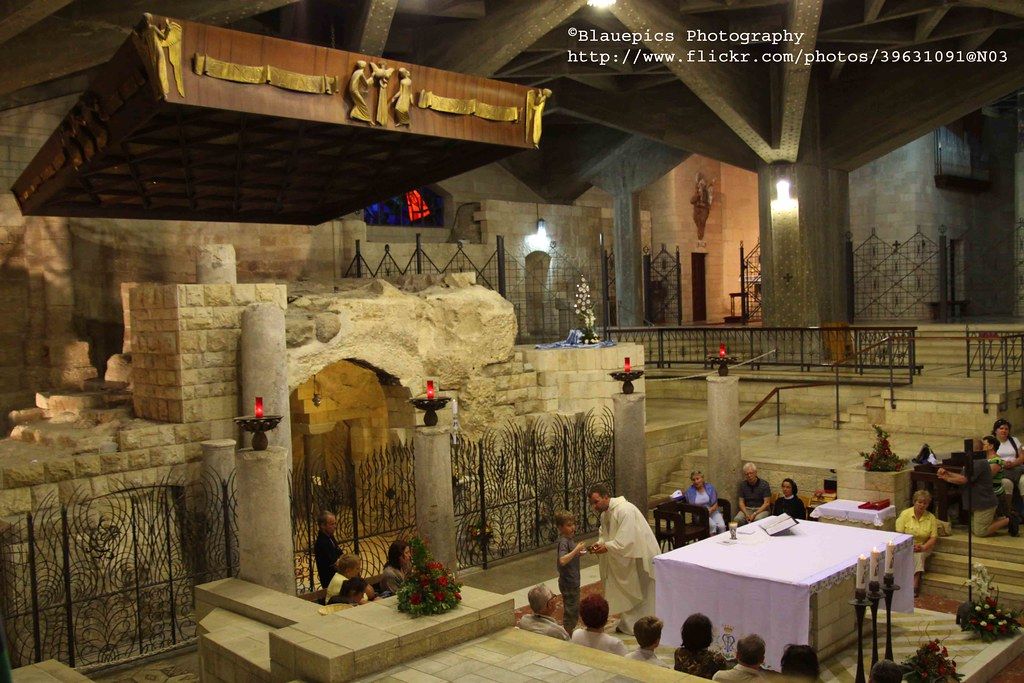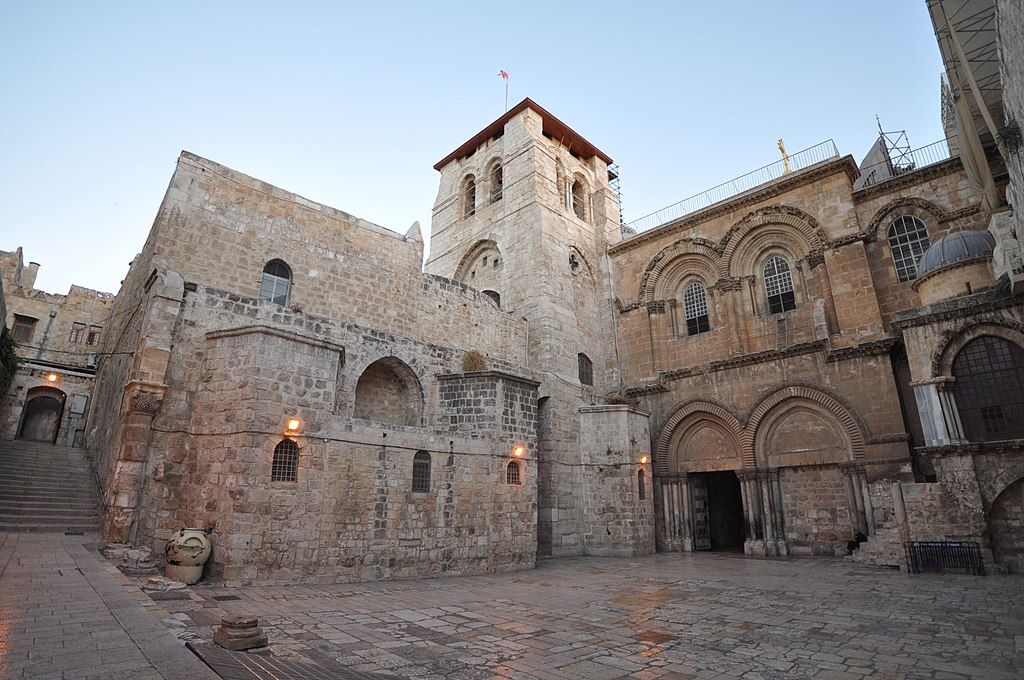
How Sacred Sites were Discovered
Helena, the mother of Constantine the Great, converted to the Christian faith and went on a two-year pilgrimage to Judea in 326-328A.D. Scholars estimate that by the end of the first century there were approximately five million Christian believers in the Middle East, Mediterranean area and Europe. Many believers were already making pilgrimages to these and other sites prominent in the ministry of Jesus. Therefore, it was relatively easy for Helena to authenticate these locations and provide protection from civil uprisings, wars and the natural forces of nature by constructing churches to encapsulate these sites.
As mother of the emperor of the known world, Helena no doubt traveled with a large entourage of soldiers, attendants and staff to ensure that she arrived in the holy land safely and to help authenticate the various sites that played important roles in the life of Jesus as documented in the Gospels. She would have methodically used Gospel accounts to direct her as she moved from one geographic location to another throughout Judea. At each location, she would have set up camp in order to take the time necessary to interview local residents and ascertain the exact location of the site in question. Only after many weeks, perhaps months of much research would she and her advisers be able to reach an irrefutable conclusion as to the exact authenticated site in question. She would then have her legal team research the ownership title of the property. Next, the price of the property would be negotiated, a deed drawn up and signed and the price paid. Helena would then send a messenger back to Constantinople to inform her son of the contractual agreement. Surveyors and architects would have then been dispatched to the location to start the preliminary process of creating construction plans to erect churches over the sites.

The home of Joachim and Anne was originally enshrined by Helena in what is now the Church of the Annunciation in Nazareth. Even though three hundred years had passed since Jesus’ ascension, Helena’s job of locating sacred structures and land areas where miracles took place would not have been difficult. This is because the extremely poor and small village of Nazareth had hardly changed in three hundred years from the time of Jesus. And why would it have changed? In 70A.D., the Jews revolted against 133 years of Roman rule. The Romans retaliated by killing 1.1 million Jews in Jerusalem and driving all the surviving Jews of Israel into an exile that would last almost two thousand years. They then went methodically from town to town throughout the nation of Judea killing those Jews that stood and fought and dispersing the rest of the Jewish population into surrounding nations and the world. The Romans executed a well-developed plan of genocide against the Jews. Their goal was to kill or exile all Jews and then methodically tear down every Jewish home and building in every town and village. It was the perfect example of a scorched earth policy. The Romans even officially renamed the country of Judea to Palestine in honor of Judea’s most hated enemy the Philistines. They also ordered all maps with the name Judea to be destroyed and reprinted new maps to include this name change. It was from this point in time that the nation of Judea slowly faded from existence and its people from the pages of history. Some Jews managed to stay in the country and unbelievably conducted a second final and extraordinarily disastrous rebellion against Rome in 135A.D. The end of the Jewish nation was now complete. The only population left was Christians and pagan gentiles.
The destruction of Judea allowed for two situations to occur. First, Christians could now choose to reside on or near the actual holy sites where Jesus lived and preached. These sacred sites were all well-known and venerated starting immediately after Jesus ascended in 33 A.D. But now it was possible to actually purchase the sites thus preserving their exact locations. These sites were carefully researched, evaluated and purchased by Helena between 326 and 328A.D. As a devout Christian and accompanied by a full staff of scholars, Helena was not about to be duped by local Arabs into buying the wrong properties. She was in no hurry and knew that the full weight of locating the correct sites was fully on her shoulders. This is why she took two yeas of painstaking research and travel to ultimately establish six official pilgrimage sites. Secondly, the population and economy of Judea was so devastated by the Romans that time literally stood still in both Jerusalem, Nazareth and all other towns and villages throughout Judea. Therefore, when Constantine legalized Christianity throughout the Roman empire in 313A.D., Helena had very little difficulty locating the actual sites as the towns had hardly changed since the time of Jesus. In fact, Samuel Clements, better known as Mark Twain, visited Israel in 1867 and said that, “the entire land was desolate and void of inhabitants with the exception of a few scattered Bedouin camps”. He went on to write, “the Jezreel Valley did not have a single village within thirty miles in any direction”. The entire landscape was filled with only destroyed and empty villages and the overall look of Israel was, “dismal… a silent mournful expanse” dotted with “nasty villages” … “miserable huts” and “squalid humanity” … “wretches” … “fringed with filthy rags” and “with infested vermin” (Mark Twain, “Innocents Abroad”, 1867). It was like a land frozen in the first century. Rabbi Nachman wrote of Israel in 1267A.D., “Israel is forsaken and Jerusalem is the most desolate place of all”. Christianity was declared the official religion of the Roman Empire by Theodosius I in 380 A.D.
Fortunately, by the time of Helena’s visit, there now existed a three hundred-year history of devotees of Jesus making pilgrimages to the well-established holy sites in various villages. As for the village of Nazareth, pilgrims wanted to see for themselves Mary’s family home where the angel came to announce to her that she would give birth to the Messiah. Then, they literally went across the street to see the ancestral home of Joseph where Jesus grew up. When you visit the sites today, you see two small traditional Jewish homes hewed out of soft limestone. As you look through the doorway of Mary’s home, now The Church of the Annunciation, you will see an entry room with a stone stairway to the right that leads up to other rooms. Joseph’s home, The Church of Nutrition, is also dug out of limestone and while originally at ground level, is now in the basement of the church that was built over the home to preserve the site. We first read of this church in 670A.D. where it is described as being of Byzantine design. This style was very popular by 330A.D. which was the time period of Helena’s visitation. This architectural design fell out of fashion around 1450A.D.

The site of Jesus’ crucifixion and burial were the easiest sites for Helen to confirm. In 135 A.D. the location was a well-established pilgrimage site visited by millions of Christians. Roman Emperor Hadrian was infuriated at the crowds that came to worship a Jew convicted and executed for sedition against the Roman Empire. So, he ordered that the tomb be infilled with gravel as well as the immediate surrounding area in order to build up and create a flat platform. He then used this platform as the foundation of a temple dedicated to Jupiter the chief deity of the Roman state. Some believe the temple was instead dedicated to Venus the goddess of love and victory. In an ironic twist that could only be conceived by God, modern astronomy software now shows that the Star of Bethlehem was in fact the conjunction of these very two planets that occurred on June 17th 2B.C. Also, the infill of the tomb only helped preserve it for 192 years until Helena arrived to rediscover and enshrine it within a cathedral.
Helena engaged the help of the Bishop of Caesarea Eusebius and the Bishop of Jerusalem Macarius to authenticate the location of the tomb. They both assured her that the tomb was under the pagan temple (Eusebius, "Life of Constantine" 4th Century, 3.29-32). Helena ordered the temple to be dismantled and the loose soil removed. It was then that they discovered a first century Jewish tomb complete with three crosses and crucifixion nails! Oral tradition states that Helena took the crosses and had them cut into pieces as holy relics which she then presented to various churches throughout the Roman Empire. She had the crucifixion nails melted down and turned into good luck amulets to be worn on Roman horses used in battle.
Helena is credited for building The Church of the Annunciation in Nazareth. She also probably built the original Cave Church located next to the ruins of Jesus' childhood home in Nazareth. This home is located directly across the street from the home of Mary. Jesus' home and the adjacent Cave Church were later encapsulated by a byzantine church which was later encapsulated by the current Church of Nutrition. Helena is also is credited for building The Church of the Nativity in Bethlehem, The Church of the Holy Sepulcher in Jerusalem, The Church of the Pater Noster or Ascension on the Mount of Olives and the Church of Saint Catherine’s located at base of Mount Sinai, Egypt.
Needless to say, we owe a great debt of gratitude to Helena and her son Alexander!
If you enjoy the information provided on this site, please consider making a donation of any amount to help continue its production. Donate Now